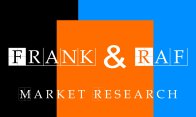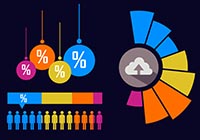Description
Summary: The Report Contains Glycerol Market Size By Source (Biodiesel, Fatty Acids, Fatty Alcohols), By Application (Personal Care, Alkyd Resins, Polyether Polyols Applications), Downstream Opportunities, Competitive Analysis & Forecast, 2012 – 2022 Industry Overview Global glycerol market size was estimated at USD 1.64 billion in 2014 and is estimated to grow at 7.9% from 2015 to 2022. Also known as glycerin when commercial material contains over 95%, some notable applications include food industry, pharmaceuticals, personal care and healthcare. Commercial production routes include saponification and transesterification processes; epichlorohydrin route is not majorly used as owing to its economic infeasibility. As of 2014, over 65% of glycerol is obtained as a by-product of bio-diesel production. Surging cosmetics demand in European countries such as Germany, France and UK is expected to drive glycerol market demand, particularly as a moisturizer in personal care products. Being a sugar free and lecithin enriched nutrient, along with the presence of these nutrients is expected to drive growth as a nutritional food supplement. Global oleochemical market was 14.6 million tons in 2013 and is expected to exceed 20 million tons by 2020, growing at over 4.5%. Oleochemical demand is expected witness growth owing to increased need for biodegradable and sustainable products. Its biodegradable and non-toxic nature makes it a suitable substitute to DEG and propylene glycol. Uncertain feedstock supply is expected to acts as a major restraint for the industry. Over the past few years, oleochemicals have accounted for 10% to 15% of global vegetable oil consumption, of which only 2% is used for production. On account of surging food consumption, vegetable oil availability as a raw material production is expected to be tight which may drive glycerol price over the forecast period. Application Overview Personal care and pharmaceutical applications dominated the glycerol market in 2014, with over 38% of global consumption. Increase in demand for these products as a result of improving lifestyle coupled with rising health awareness among population in emerging markets of Asia Pacific and Latin America is expected to be a key driver for growth. It is also the primary component in alkyd resins; a group of thermoplastic resins used in making protective coatings, as film forming agents in paints, varnishes and enamels and are an important part of the synthetic paint industry. Alkyd resins are also used in interior paints and heavy machinery coatings, with glycerol demand revenue estimated to exceed USD 400 million by 2022. In food and beverage applications, it acts as a humectant, solvent, sweetener, and also helps preserve foods. Additionally, it is used as fillers in commercially prepared low-fat foods such as cookies, and as thickening agents in liqueurs. Source Overview Low cost product, derived from bio-diesel as a result of increasing capacity as replacement for conventional diesel owing to biodegradable, renewable, non-toxic properties and lesser emissions has seen it emerge as the largest glycerol source, accounting for over 67% of demand in 2014. Fatty acids and soaps are expected to witness a decline in demand as sources over the next seven years. Regional Overview Asia Pacific glycerol market dominated demand, estimated at 916.5 kilo tons in 2014. Strong demand in countries such as India, China, Japan, Malaysia and Indonesia, for food and beverage industry is primarily responsible for regional development. Biodiesel was the most preferred source in the North America glycerol market, on account of vast reserves in the region. Biodiesel demand in North America was 306.5 kilo tons in 2013 which is expected to reach 476.1 kilo tons by 2020, growing at a CAGR of 6.5 % from 2014 to 2020. Europe demand is expected to reach 1,178.7 kilo tons by 2022, with gains at over 5%. Competitive Market Share Global glycerol market share is highly concentrated, as top four participants accounted for over 65% of the total demand in 2014. Key market players include IOI, KL Kepong, Oleon, Wilmar, P&G and Emery. A number of glycerol manufacturers follow an integrated system for production, including raw material crops, processing & refining in their processing units and then use end product in different applications.

